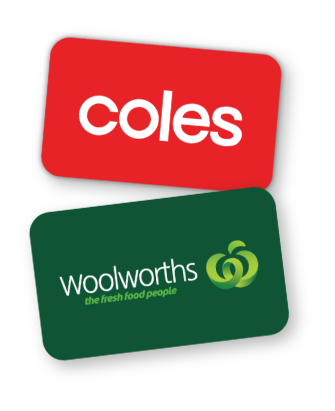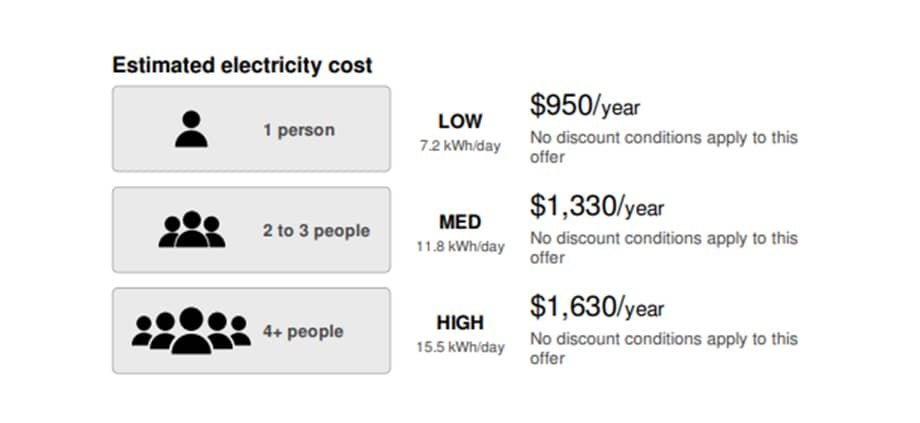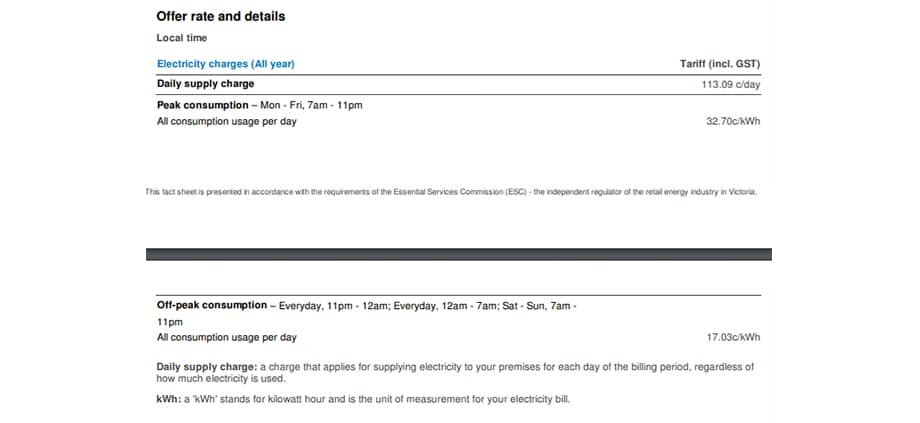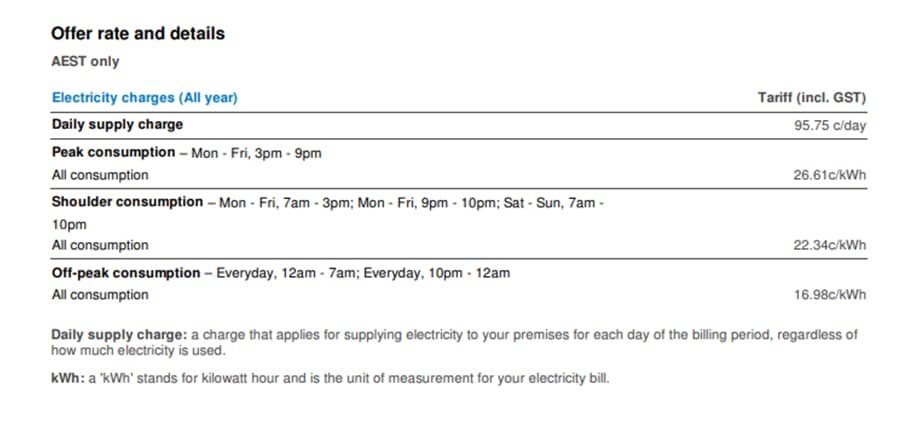Feel like your cost of electricity per kilowatt-hour (kWh) is higher than usual? Want to know what’s a reasonable kWh rate to pay? In this article, we take a look at the average electricity cost per kWh across various Australian states, so stay tuned!
From charging your phone to watching tv, electricity gives life to everything around us. Without it, we might as well still be in the stone age.
Electricity usage is the measure of how much energy you consume. Your usage is measured on a kWh rate. Most electricity providers charge a peak rate ranging between 20 and 40 cents per kWh that varies based on where you live.
Searching for the best kWh electricity rate your state has to offer? We offer a 100% FREE comparison service where we compare plans and help you find a competitive rate. Give Electricity Monster a call on 1300 232 848 and speak to one of our energy experts today!


Contents
Electricity kWh rates by State
Due to Australia’s sheer size and nature, electricity usage rates differ from state to state. In the table below we have compiled a list of the average cost of electricity kWh per state including GST. These rates reflect the showcase offers on a single-rate tariff from 7 energy providers in Australia. The 7 retailers are ActewAGL, Origin Energy, AGL, Energy Australia, Alinta Energy, Aurora Energy and Red Energy.
| State | Average Electricity Usage Rates (c/kWh) |
|---|---|
| NSW | 26.53c |
| VIC | 25.86c |
| QLD | 22.20c |
| SA | 35.32c |
| ACT | 22.81c |
| TAS | 26.59c |
Insights
Wow! It’s not surprising to see that South Australians by far have the highest average electricity kilowatt-hour (kWh) rates across all the states. In fact, South Australians have some of the most expensive electricity in the world!
South Australia's low supply of generation makes electricity prices higher, so retailers can’t give significant discounts. This is why discounts don’t look as attractive as other states.
I think it’s fair to say that QLD and ACT residents should be stoked with the lowest kWh rate in Australia. But Victoria, Tasmania and NSW residents aren't completely off the hook though! Your average prices could still mean that people might be overpaying for their electricity. So there’s some work to be done to get a better rate!
Your Electricity Bill
An electricity bill consists of 2 components; your usage charges (kWh) and your daily fixed supply charge. The usage rate is a variable rate that charges you according to how much electricity you use. The daily supply charge is a fixed rate you get charged per day for your connection to the grid.
A sharp kWh rate would be more beneficial for a household that consumes heaps of electricity. But in contrast, a low daily supply charge would suit a household or business that uses very little energy.
Discounts are another aspect of your electricity bill. There are different types of discounts that energy retailers can offer. Some discounts apply to both the kWh rate and the daily supply while other discounts may only apply to your kWh rate.
How to find my kWh?
Well, now that you have a rough idea of what a kWh of electricity is let’s get on to how you can find it.
By law, electricity retailers are required to make all details of their plans publicly available. Their energy fact sheets include all the details to help you make an informed decision as to whether this is the right plan for you.
Electricity retailers typically publish a plan’s kWh rates and supply charge towards the bottom of the energy price fact sheets. However, some fact sheets may differ.
Below is an example of an energy fact sheet from our partnered providers, Simply Energy. It’s their Simply NRMA blue plan on a single rate tariff in the Citipower network in Victoria as of 5/10/2020.
In Victoria, energy retailers are required to show charges inclusive of GST to make it more transparent for households. In other states, retailers can show their charges either including or excluding GST, but most default to inclusive of GST for simplicity.
Average kWh based on Household Size
The energy price fact sheets also give you great insights into the estimated kWh usage for different household sizes. They also show the estimated cost of electricity in your area and acts as a benchmark to compare your actual energy bill with.
The below picture is an example from one of our partners, Energy Australia’s energy price fact sheets. This is their single-rate tariff Total Plan in the Citipower network in Victoria as of 10/12/2020.
Types of Kilowatt-hour (kWh)
There are multiple types of kWh tariffs electricity retailers offer. Picking a particular tariff type that suits your needs depends on how you use your electricity. Our table above focuses on a single rate tariff, but below we have listed some other tariffs that residential customers could come across.
Single Rate
A single rate tariff is the most common tariff you’ll come across. It’s one single rate you pay for the electricity you use, regardless of the time of day.
It puts the flexibility in your hands by letting you use your energy when you want it, for no extra cost.
Here is an example of OVO Energy’s One Plan on a single rate tariff in the Ausgrid network in NSW as of 01/08/2020.
Time Of Use (TOU)
A Time of Use Tariff offers you different usage rates based on the time of day you consume electricity. It reflects certain periods of the day where the usage rate is cheaper due to low demand. This type of tariff can help you manage your cost of electricity by using it when it’s cheaper!
There are 2 types of Time Of Use tariffs; a two-rate and a flexible rate.
Two-Rate
A two-rate TOU tariff has peak and off-peak usage rates (kWh). The peak rate is typically during the daytime and charged at a higher rate. Whereas the off-peak rate is for the hours of the day, where electricity usage is relatively minimal, generally between 10pm at night to 7am in the morning.
This is an example of Energy Australia’s Total Plan on a two-rate TOU tariff in the Citipower network in Victoria as of 10/12/2020.
Flexible Rate
A TOU flexible rate has 3 different rates; a peak, shoulder and off-peak usage rates (kWh). A peak rate has the highest rate as demand is generally higher at this time of the day. In comparison, the off-peak rate is usually a cheaper rate for when energy usage is low.
The shoulder rate separates the peak and off-peak period with its cost generally coming somewhere in the middle of a peak and off-peak rate.
The below example is from Origin Energy’s Origin Go plan on a Time of Use flexible rate in the Citipower network in Victoria as of 19/10/2020.
Controlled Load
A controlled load tariff usually applies to a single heavy-use appliance. It’s typically used for heating your hot water. But it could also be used by other big stand-alone appliances such as underfloor heating or irrigation pumps.
The below example OVO Energy’s One Plan on a controlled load tariff in the Citipower network in Victoria as of 20/08/2020.
Still confused about what electricity tariffs are? Or are you not sure what your energy tariff is? Call us on 1300 232 848 to see what energy tariff you’re on and if it’s the best one for you!
When do the rates change?
There are 2 different types of contracts that energy retailers may offer; A standing offer and a market offer.
A standing offer comes with a guarantee that your electricity rates can increase no more than once every 12 months. But residential customers on a market offer could be subject to a rate adjustment at any given time, provided the retailer gives prior notice.
QLD, NSW, SA, ACT and TAS typically get their rates updated around July, but Victoria does things differently. Victoria’s annual electricity usage (kWh) rate normally updates around January.
Variable vs Fixed Plans
Energy retailers can offer 2 types of electricity plans. A ‘variable-rate plan’ and a ‘fixed-rate plan’.
Variable-Rate Plan
If you’re on a variable-rate plan, your electricity rates may change as long as your retailer gives you prior notice. These plans typically come with no exit fees. So if you get a notice that your rates are increasing, you can easily switch to a more competitive rate from another retailer.
When wholesale electricity prices are low, variable-rate plans can be very competitive and attractive to customers looking for a sharp deal.
Fixed-Rate Plan
If you’re on a fixed-rate plan, this means your rates are locked in or guaranteed not to change for a certain period of time. Nowadays, fixed-rate plans generally do not have exit fees.
When wholesale electricity prices are volatile, fixed-rate plans can be attractive due to the security that your rate isn’t going to increase.
How to get the best electricity rate per kWh?
There’s the rundown on the average electricity prices per kWh across the various Australian states!
There are a few factors to consider when choosing an electricity plan. A low kWh rate would be beneficial to a household that consumes large amounts of electricity. But a low fixed supply charge would be better suited to a household that barely uses electricity.
It’s also important to check if discounts and other benefits are offering genuine value with the plan.
If you’re not sure which rate is best for you, that’s where we come in! Electricity Monster is your go-to for finding a better energy deal! We offer a 100% FREE comparison service to help you find a better plan with a sharper rate!
So are you paying a reasonable electricity cost per kWh?
Want to know how you can get a good rate in your area? Call us on 1300 232 848 today! One of our energy experts is up for a friendly chat to help sort you out with a great kWh rate. What are you waiting for? Call us now!
Disclaimer:
Important Notes To Consider:
- Average kWh costs are based on the showcase offers of the 7 Energy Retailers; ActewAGL, Energy Australia, Origin Energy, Aurora Energy, AGL, Alinta Energy, Red Energy.
- Average Electricity Costs per kWh show a GST inclusive figure.
- All plan images have been captured off the Energy Price Fact Sheets taken from the respective retailers’ websites.
- The information in this blog cannot substitute for legal advice. No financial decisions should be made based on information from this blog.
- This data is accurate as of 11/12/2020
Get a $50* Coles or Woolies Voucher
When You Call & Switch Today
- Compare Providers
- 100% Free Service
- Brokered Over 150,000 Deals
Benjamin Tom
Benjamin Tom covers the retail energy market, with a focus on electricity, solar, and Internet. His interests include helping people navigate the complexities of the energy market while saving money on their power bills.





